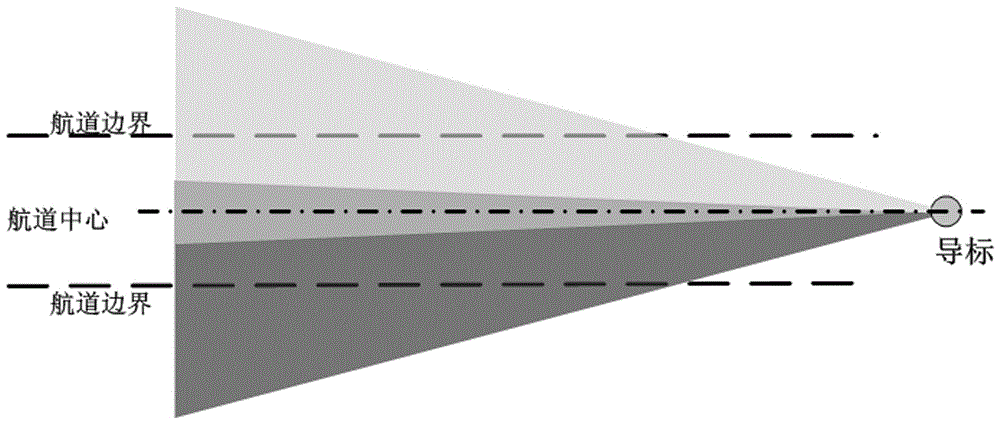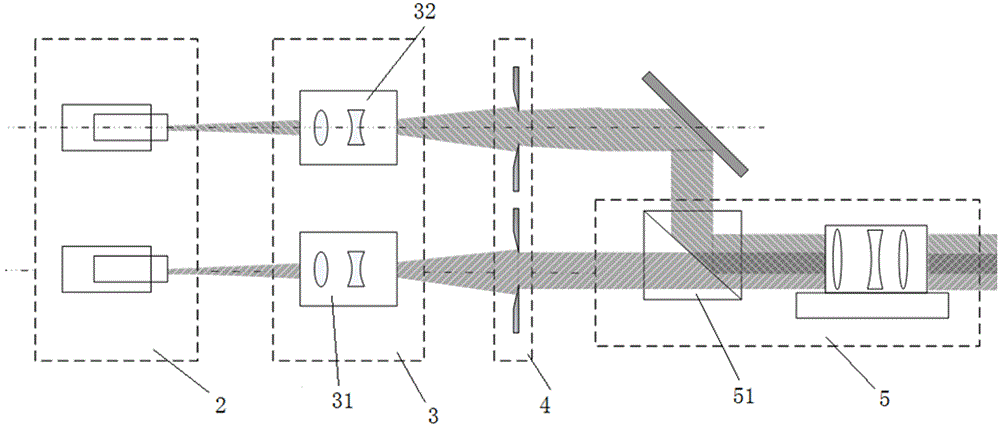Laser leading beacon optical system
A technology of optical system and projection optical system, applied in the direction of optics, optical components, electric light source, etc., can solve the problems of navigation safety hazards, difficult to identify guide lights, difficult to identify navigation aids, etc., and achieve high transmittance, high Visibility, high directional effects
- Summary
- Abstract
- Description
- Claims
- Application Information
AI Technical Summary
Problems solved by technology
Method used
Image
Examples
Embodiment Construction
[0023] The present invention will be further elaborated below by describing a preferred specific embodiment in detail in conjunction with the accompanying drawings.
[0024] The invention provides an optical system design scheme of a laser guide, which uses red and green light for navigation. The optical system needs to provide such as figure 1 The red and green parallel fan-shaped light beams shown have a certain overlapping area at the boundary, and it is necessary to ensure that the entire navigation area is covered. At the same time, the optical system should ensure the high resolution of the laser beam projected on the channel and the efficient use of energy. Therefore, it is necessary to ensure the uniformity of the intensity distribution of the exit spot and the minimum energy loss during the shaping process.
[0025] The optical system of the laser guide, such as figure 2 As shown, it includes an adjustment base 1; a light source laser 2 arranged on the adjustment b...
PUM
 Login to View More
Login to View More Abstract
Description
Claims
Application Information
 Login to View More
Login to View More - R&D
- Intellectual Property
- Life Sciences
- Materials
- Tech Scout
- Unparalleled Data Quality
- Higher Quality Content
- 60% Fewer Hallucinations
Browse by: Latest US Patents, China's latest patents, Technical Efficacy Thesaurus, Application Domain, Technology Topic, Popular Technical Reports.
© 2025 PatSnap. All rights reserved.Legal|Privacy policy|Modern Slavery Act Transparency Statement|Sitemap|About US| Contact US: help@patsnap.com



